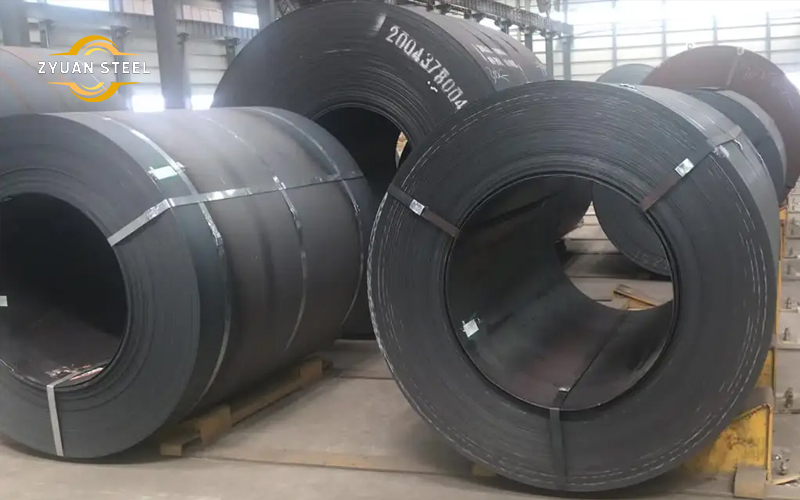Product Center
 A106 Cold Drawn BarCold-rolled steel is steel produced by cold rolling. Cold rolling is a steel plate in which the steel plate is further thinned to a target thickness at room temperature. Compared with hot-rolled steel sheets, the thickness of cold-rolled steel sheets is more accurate, and the surface is smooth and beautiful, and it also has various superior mechanical properties, especially in terms of processing performance. Because cold-rolled raw coils are relatively brittle and hard, they are not suitable for processing, so cold-rolled steel sheets usually require annealing, pickling and surface smoothing before being delivered to customers. The maximum thickness of cold rolling is below 0.1--8.0MM. For example, the thickness of cold-rolled steel sheets in most factories is below 4.5MM; the minimum thickness and width are determined according to the equipment capacity of each factory and market demand.
A106 Cold Drawn BarCold-rolled steel is steel produced by cold rolling. Cold rolling is a steel plate in which the steel plate is further thinned to a target thickness at room temperature. Compared with hot-rolled steel sheets, the thickness of cold-rolled steel sheets is more accurate, and the surface is smooth and beautiful, and it also has various superior mechanical properties, especially in terms of processing performance. Because cold-rolled raw coils are relatively brittle and hard, they are not suitable for processing, so cold-rolled steel sheets usually require annealing, pickling and surface smoothing before being delivered to customers. The maximum thickness of cold rolling is below 0.1--8.0MM. For example, the thickness of cold-rolled steel sheets in most factories is below 4.5MM; the minimum thickness and width are determined according to the equipment capacity of each factory and market demand.
Carbon steel, also known as carbon steel, is an iron carbon alloy with an internal carbon content of nearly 2%. In addition to carbon, carbon steel contains many other elements, such as manganese, sulfur, or silicon. Generally speaking, the higher the amount of carbon contained in carbon steel, the greater its hardness, the higher the strength will be produced. Just note that the higher the carbon content, the lower the plasticity. Carbon Steel Wearing PlateWear Plate is a duplex material consisting of a very tough and highly wear resistant alloy overlaid into a shock absorbing mild steel or chromium steel backing plate.
Carbon Steel Wearing PlateWear Plate is a duplex material consisting of a very tough and highly wear resistant alloy overlaid into a shock absorbing mild steel or chromium steel backing plate.
Carbon steel, also known as carbon steel, is an iron carbon alloy with an internal carbon content of nearly 2%. In addition to carbon, carbon steel contains many other elements, such as manganese, sulfur, or silicon. Generally speaking, the higher the amount of carbon contained in carbon steel, the greater its hardness, the higher the strength will be produced. Just note that the higher the carbon content, the lower the plasticity. 1023 Carbon Steel PlateSAE / AISI 1023 steel is a type of low-carbon alloy steel specifically designed for use in applications that require excellent machinability and formability. It is often used in the manufacture of automotive components, such as engine blocks, transmission parts, and wheel hubs.
1023 Carbon Steel PlateSAE / AISI 1023 steel is a type of low-carbon alloy steel specifically designed for use in applications that require excellent machinability and formability. It is often used in the manufacture of automotive components, such as engine blocks, transmission parts, and wheel hubs.
Carbon steel, also known as carbon steel, is an iron carbon alloy with an internal carbon content of nearly 2%. In addition to carbon, carbon steel contains many other elements, such as manganese, sulfur, or silicon. Generally speaking, the higher the amount of carbon contained in carbon steel, the greater its hardness, the higher the strength will be produced. Just note that the higher the carbon content, the lower the plasticity. A387 Grade 22 Class 2 Pressure Vessel PlateA387 Grade 22 Class 2 is a grade of chromium-molybdenum alloy intended primarily for use in welded boilers and pressure vessels which are designed for use in raised temperature service.
A387 Grade 22 Class 2 Pressure Vessel PlateA387 Grade 22 Class 2 is a grade of chromium-molybdenum alloy intended primarily for use in welded boilers and pressure vessels which are designed for use in raised temperature service.
Carbon steel, also known as carbon steel, is an iron carbon alloy with an internal carbon content of nearly 2%. In addition to carbon, carbon steel contains many other elements, such as manganese, sulfur, or silicon. Generally speaking, the higher the amount of carbon contained in carbon steel, the greater its hardness, the higher the strength will be produced. Just note that the higher the carbon content, the lower the plasticity. Carbon Steel CoilCarbon Steel Cold Rolled Strip / Coil / Sheet is a tough and resilient material that can be used in a wide variety of applications. It is a great option for blades, tools, and equipment.
Carbon Steel CoilCarbon Steel Cold Rolled Strip / Coil / Sheet is a tough and resilient material that can be used in a wide variety of applications. It is a great option for blades, tools, and equipment.
Carbon steel, also known as carbon steel, is an iron carbon alloy with an internal carbon content of nearly 2%. In addition to carbon, carbon steel contains many other elements, such as manganese, sulfur, or silicon. Generally speaking, the higher the amount of carbon contained in carbon steel, the greater its hardness, the higher the strength will be produced. Just note that the higher the carbon content, the lower the plasticity. Cold Rolled Steel PlateCold rolled steel is essentially hot rolled steel that has been further processed by being allowed to cool at room temperature and annealed or temper rolled. Cold rolling produces steel with closer dimensional tolerances and a wider range of surface finishes than hot rolling.
Cold Rolled Steel PlateCold rolled steel is essentially hot rolled steel that has been further processed by being allowed to cool at room temperature and annealed or temper rolled. Cold rolling produces steel with closer dimensional tolerances and a wider range of surface finishes than hot rolling.
Carbon steel, also known as carbon steel, is an iron carbon alloy with an internal carbon content of nearly 2%. In addition to carbon, carbon steel contains many other elements, such as manganese, sulfur, or silicon. Generally speaking, the higher the amount of carbon contained in carbon steel, the greater its hardness, the higher the strength will be produced. Just note that the higher the carbon content, the lower the plasticity.

{item.title}
{item.description}






